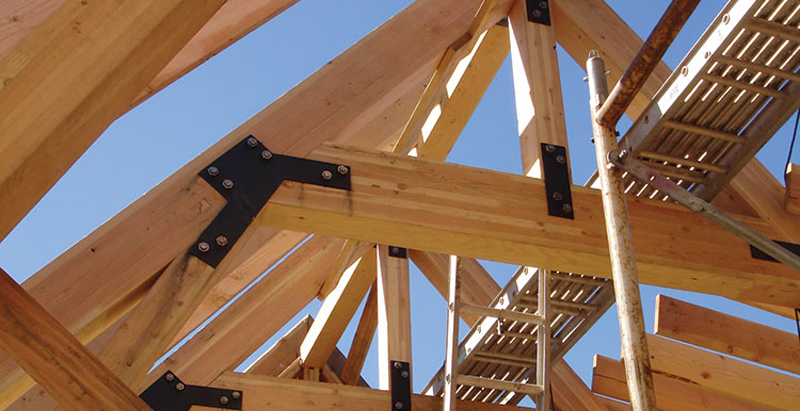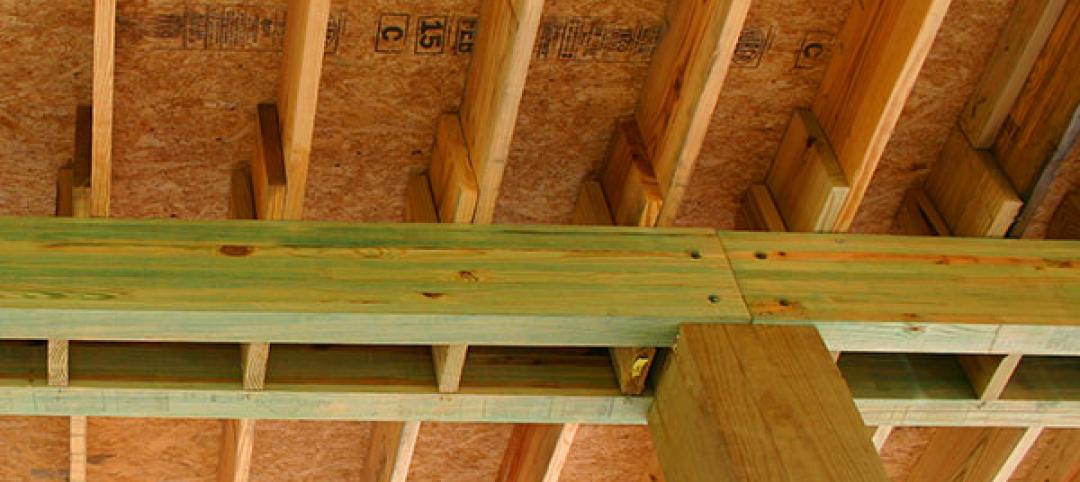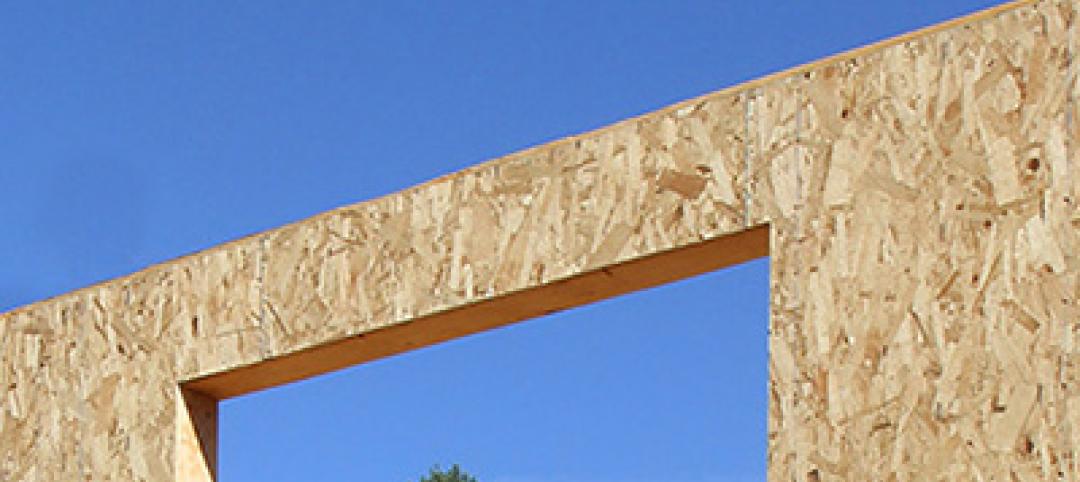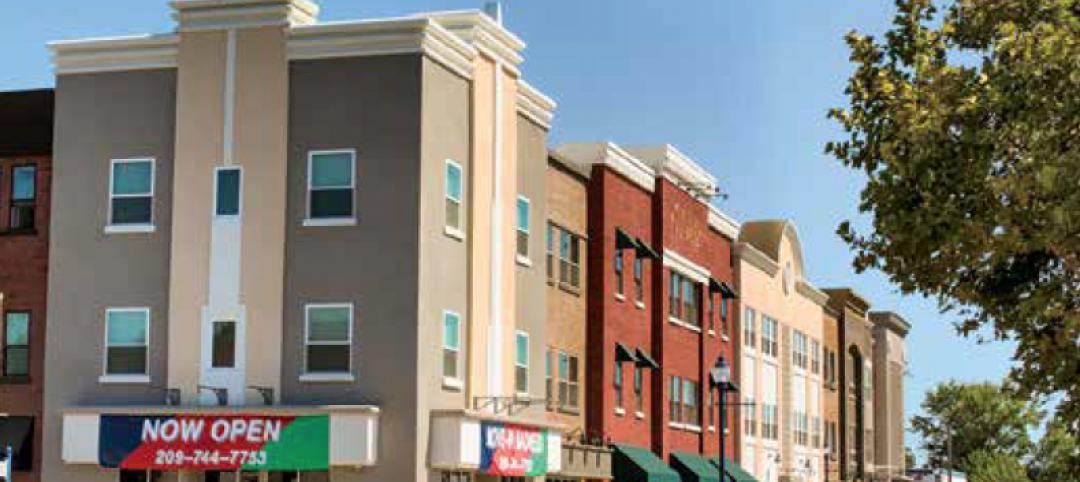As part of its Compelling Conversations initiative, APA’s Designers Circle program features thought-leading architects talking with an APA expert about real issues they and their colleagues face when working with engineered wood in commercial applications. This installment features a wide-ranging discussion between structural engineer Chris O’Hara and APA’s Karyn Beebe that reveals how a mix of engineered wood products lend themselves to expressive design — and what’s blocking today’s designers from fully embracing this aesthetic.
Karyn: The Snowmass Transit Center project uses an interesting mix of materials — from glulams to I-joists to dimension lumber and steel. As a structural engineer, how do you see this mix of products playing into your overall design aesthetic?
Chris: The project’s design aesthetic is referred to a lot in Colorado as the “mountain vernacular.” And so many of our projects have unique geometries and challenges that oftentimes befit a mix of material. A lot of modern interpretations of that aesthetic lend themselves to glulam design, too.
On the Snowmass Transit Center, the design was really about being expressive and playful with the wood. The end truss is a nonconventional geometry. It’s more of a radial layout in terms of the web members of the truss. And then for the interior, we used an arch-like truss, or scissor truss, to create a vaulted space with a lot of warmth.
A lot of that was possible through the combination of using glulams and I-joists rather than traditional sawn lumber.
Karyn: As an engineer myself, I know it’s pretty exciting for you to have the structure be the architecture as well. It sounds like a goal of many of your projects is to not cover up the bones of the building.
Chris: Exactly. Sometimes it’s about pure form, whether it’s simple linear geometry or more angular geometries. And sometimes it’s really just a matter of expressing the timber and the structure — making the structure the aesthetic of the building.
We really enjoy using expressive design in our projects — whether it’s through the elegance of the form or just the expression of the finer details and the trueness of those details. Just by its nature, wood lends itself to an expressive detailed condition.
That’s especially true when it comes to connections. For a lot of people, the solution to a difficult connection is to throw more welds or more bolts at it. But with timber, if you put too many bolts in, you Swiss cheese it, and it doesn’t maintain the capacity. A lot of times you add a lot more material than you wanted. So the simple elegance of connection and how things can delicately attach to each other, while still being extremely rigid, is one of the things we enjoy and try to express in our timber designs.
Karyn: You really focus on the connections and keeping them simple and elegant. What take-home messages would you have for structural engineers about that?
Chris: I think the first thing would be: use as few fasteners and as few hold-downs as possible. You can transfer loads through simple bearing and layering. So, obviously, that affects your bolt size and similar elements. Done right, it actually saves a lot of lumber because too many penetrations can start to reduce the capacity of the material right at its maximum shear point.
Oftentimes, people try to put a bunch of bolts within three inches of each other all over the place in moment connections. We actually go the other way and reduce it down to just two bolts and spread them apart by like two feet so that we create a couple connections. It’s basically a bigger lever arm or a larger seesaw. That more elegant style of detailing actually makes the lumber much, much smaller than it otherwise would have to be. And then the detail becomes this expressive, beautiful, elegant function.
It’s interesting, a lot of that detailing really developed from our work with structural glass — some of the fastening methods you’re seeing in these crazy glass structures we’ve had the joy to work on, similar to the Apple stores. The same philosophy or connection strategy applies very well to elegantly designed timber. And that’s what can really make things quite beautiful.
Karyn: I get what you’re saying. But officially, APA recommends using a larger number of smaller diameter fasteners. That’s because smaller connections generally split less as a result of dimensional changes and connection geometry. Generally, connections with fewer large diameter fasteners require some additional considerations.*
Overall, we always recommend supporting and bearing whenever possible. Keep it simple. But we also advise people to remember that wood moves, so to allow movement in your connections. Have you learned that over time as well, when you’re looking at oversized holes? Maybe fewer holes, but having some room for movement?
Chris: Oh, of course. That’s just the function of material — how it shrinks over time, and dries out, and what kind of environment you’re installing in. All of these factors are very critical. Even something as simple as the bolt placement — when you’re talking about a laminated member — making sure you’re thinking about where the bolts are relative to the laminations is important. It comes back down to how designers need to have a level of craft and really understand the materials and the technologies they’re designing with.
It’s one of those moments where it’s great to get in with more fabricators and getting more people who are boots-on-the-ground building these timber structures to really understand how they perform. The more designers get out into the field and into some of these fabrication shops, the better our designs will become.
Karyn: Absolutely. You know, traveling from coast to coast, we find some structural engineers will simply size the loads the connection needs to take. Then they allow the fabricator to come up with the design for their review. Other engineers will do more of that design themselves. Either way works, provided you are having that conversation with the fabricator. Would you agree?
Chris: Yes. I’m not saying everything in the world needs to go to design/build. But the more there’s a dialogue, as opposed to, “We put our drawings together, and we send it out the door,” the better the designs will become. The fabricators can learn from the designers. And the designers have tons that they can learn from the fabricators and installers.
That’s one of the challenges we’re getting in the modern world. Partially due to some lost generations in the design fields from the recession, as well as the advent of building information modeling (BIM) and the younger generation that knows how to do BIM or REVIT, but not how to build a proper wall section or detail. There’s a loss of some of that craft in architecture.
So I always encourage younger people in the profession to spend as much time in the field as humanly possible. Because you will learn more in your first year with a good foreman and on the job site than you would doing simple engineering calcs or designs in an architectural office.
Karyn: So true. I love how you’re always pushing the boundaries of design in your projects. And I understand you’re now looking to do the same with CLT — cross-laminated timber for mass timber structures. How do you see CLT fitting in with other structural building materials? And how do you see yourself integrating it into your designs?
Chris: I have never met an architect who doesn’t want a thinner floor system. And with CLT you can really make the floor incredibly stout, while still being very thin, and start achieving some longer spans. And if you want to expose CLT and give it a very simple stain, it’s quite beautiful.
We’ve got a couple of hotel projects where CLT compares very favorably to the combination of masonry block or precast walls and precast hollow core plank that’s traditionally used. Where CLT really shines is that it can actually create part of the aesthetic — and start to save money.
Multifamily housing is another area where CLT holds great promise. Right now, multifamily is dominated by that concrete podium with four levels of stick. And nobody wants to go higher than those four levels of conventionally framed lumber. But CLT gives us the capability of going much taller in buildings that would traditionally be post-tensioned concrete, which has an enormous embodied energy relative to the wood, as well as being much slower to install.
Karyn: Right. I know CLT supply is an issue currently, but we’re catching up. In fact, three North American manufacturers are currently producing CLT that is certified for use in construction: Structurlam Products, Nordic Structures and Riddle Laminators. And I love your point about the beauty of CLT, and how engineered wood products lend a certain aesthetic to a building when mixed with other materials. So as CLT becomes more available, how do you think this material can best be used?
Chris: CLT is perfect for thin structures. If I can save two inches of floor on a six-story building, that adds up to a lot of skin in the building — and a lot of money. If you’re paying say $40 to $100 a square foot for your façade, and you cut two inches out of eight stories over however many hundred feet of perimeter, it adds up very, very fast.
Karyn: So it’s real money.
Chris: Exactly. And in general, when I think of sustainability and engineering, I’m always trying to save materials. So if a detail needs a little bit more craft and a little bit more labor, I’m trying to balance that with the material costs. I could still get CLT for the same costs, but have it be more beautiful. And then you get the other benefits of it being part of the architecture, saving the material. It becomes a very holistic design.
Chris O’Hara, a founding Principal of Studio NYL, began his career in New York. Early in his career, Chris was exposed to unique structural engineering projects in addition to more conventional building systems. Currently Chris is a board member American Institute of Architect Colorado North Chapter, and a Board member of the Native American Sustainable Housing Initiative. Chris has been a guest lecturer at CU Boulder and CU Denver for both Architecture and Engineering. Chris also leads design workshops on the Structural Use of Glass, non traditional materials and other innovative structural engineering systems.
* For more about APA’s recommended wood connections see the APA Wood University Course 201, which covers wood connection design in more detail, and APA Technical Note Glulam Connection Details, Form T300, which provides good discussion on this topic.
More from Author
Karyn Beebe | Nov 11, 2016
Value engineering brings Santa Barbara apartments back on track
When framing estimates for a new apartment complex in Rialto, California, came in too high, a savvy developer decided to have the project value engineered. A switch to glulam and wood-framed shear walls got the project back in the black.
Karyn Beebe | Sep 17, 2015
Compelling conversations about wood: coastal environments
Architect Greg Mella and APA’s Karyn Beebe have a frank and far-reaching discussion about the tangibles and intangibles of using wood in corrosive environments—and beyond.
Karyn Beebe | Dec 5, 2014
Best practices for force transfer around openings
As wood-frame construction is continuously evolving, designers in many parts of the U.S. are optimizing design solutions that require the understanding of force transfer between elements in the lateral load-resisting system.
Karyn Beebe | Nov 5, 2014
How to maximize affordability and sustainability through all-wood podiums
Wood podium construction takes an age-old material and moves it into the 21st century.










